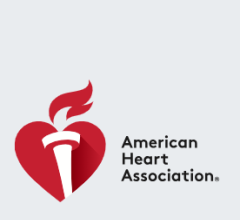
Getty Images
April 19, 2022 – It is estimated that about one in four adults worldwide has a liver condition that is a risk factor for heart disease, according to a new American Heart Association scientific statement published in the Association’s peer-reviewed journal Arteriosclerosis, Thrombosis, and Vascular Biology. The condition, called nonalcoholic fatty liver disease (NAFLD), occurs when abnormally elevated amounts of fat are deposited in the liver, sometimes resulting in inflammation and scarring. The prevalence of NAFLD is an estimate, given the challenges in diagnosing the condition, which are detailed in the statement.
An American Heart Association scientific statement is an expert analysis of current research and may inform future guidelines. Professional organizations specializing in gastroenterology have previously published statements on the condition, however, they focus on liver toxicity (including scarring, cirrhosis and liver cancer) rather than heart disease risk. This is the Association’s first statement about NAFLD.
“Nonalcoholic fatty liver disease (NAFLD) is a common condition that is often hidden or missed in routine medical care. It is important to know about the condition and treat it early because it is a risk factor for chronic liver damage and cardiovascular disease,” said P. Barton Duell, M.D., FAHA, chair of the statement writing committee and professor of medicine in the Knight Cardiovascular Institute and Division of Endocrinology, Diabetes and Clinical Nutrition at Oregon Health & Science University in Portland, Oregon.
There are two types of NAFLD: one when only fat is present in the liver (called non-alcoholic fatty liver), and the other when inflammation and scarring are also present (called non-alcoholic steatohepatitis, or NASH). Excess alcohol intake can cause similar fat deposits and liver dysfunction, so the term NAFLD is used to differentiate between disease caused by excess alcohol intake vs. disease without alcohol as the underlying cause.
NAFLD may go undiagnosed for years, thus, the statement emphasizes the need for awareness and monitoring for NAFLD, access to improved screening tools and treatment and highlights the lifestyle changes to help prevent and treat the disorder.
NAFLD raises heart disease risk
Heart disease is the leading cause of death in people with NAFLD. The diseases share many of the same risk factors, including metabolic syndrome (elevated blood sugar and blood triglycerides, increased abdominal fat and high blood pressure); Type 2 diabetes; impaired glucose tolerance (prediabetes); and obesity. However, people with NAFLD are at higher risk of heart disease than people who have the same heart disease risk factors without the liver condition.
NAFLD may sometimes be prevented
NAFLD is often preventable by maintaining a healthy body weight, exercising regularly, eating a heart-healthy foods diet and managing conditions such as Type 2 diabetes and elevated triglycerides (a type of fat) in the blood. Genetic factors also play a role in whether a person develops NAFLD and whether it leads to NASH, cirrhosis or liver cancer.
“Although healthy living can help avert NAFLD in many individuals, some may develop NAFLD despite their best efforts,” Duell said. “At the other end of the spectrum, some individuals may have a genetic makeup that protects them from developing NAFLD despite having obesity, Type 2 diabetes, metabolic syndrome, unhealthy dietary habits or being sedentary.”
NAFLD can go undiagnosed for years
Most people with NAFLD are undiagnosed, creating a barrier to optimal medical management, according to the statement. The initial stages of NAFLD generally have no symptoms and people feel well, and routine blood tests may not show liver abnormalities. Often, elevated liver enzymes in blood, a possible sign of NAFLD, may be misattributed to a side effect of medication or to recent alcohol consumption. In addition, the absence of elevated liver enzyme levels does not rule out NAFLD or NASH.
According to the statement, a specialized ultrasound that measures liver elasticity, fat and stiffness (a result of scarring) in the liver can detect NAFLD. This type of liver scan is a noninvasive way to help diagnose and monitor treatment in NAFLD and NASH, yet it is underused. Liver biopsy is the definitive test for the diagnosis of more advanced stages of NAFLD, however, it is invasive and expensive.
“The lack of awareness of the high prevalence of NAFLD contributes to underdiagnosis,” said Duell. “Individuals with risk factors for NAFLD warrant more careful screening.”
If diagnosed in time, liver damage may be reversible
“Part of the good news about managing NAFLD is that healthy eating, regular exercise and weight loss or avoiding weight gain are all valuable interventions to improve health in most of us, regardless of whether we have NAFLD,” said Duell.
Lifestyle changes are the cornerstone of treatment for early NAFLD. Dietary recommendations include reducing fat intake, limiting the consumption of simple sugars and choosing more fiber-rich vegetables and whole grains. A Mediterranean-style diet is the only specific dietary pattern recommended by a consortium of professional groups for the treatment of NAFLD and NASH. Avoiding alcohol is encouraged since even light alcohol intake can aggravate NAFLD and interfere with the liver’s ability to heal.
Consultation with a dietitian may help people with NAFLD plan and maintain a healthful diet and lose weight, if needed. The statement cites research showing that losing 10% of body weight dramatically reduced liver fat and improved fibrosis, with lower levels of improvement with at least a 5% loss in body weight. Research also supports 20-30 minutes of physical activity per day to decrease liver fat and improve insulin sensitivity even in the absence of weight loss.
Medications may be needed to treat Type 2 diabetes, lower cholesterol or reduce weight. Weight loss surgery may be appropriate for some people because the resulting, marked weight loss can be an effective intervention for NAFLD. Optimal care may also involve consulting with a lipid specialist, endocrinologist or gastroenterologist.
This scientific statement was prepared by the volunteer writing group on behalf of the American Heart Association’s Council on Atherosclerosis, Thrombosis and Vascular Biology; the Council on Hypertension; the Council on the Kidney in Cardiovascular Disease; the Council on Lifestyle and Cardiometabolic Health; and the Council on Peripheral Vascular Disease. American Heart Association scientific statements promote greater awareness about cardiovascular diseases and stroke issues and help facilitate informed health care decisions. Scientific statements outline what is currently known about a topic and what areas need additional research. While scientific statements may inform the development of guidelines, they do not make treatment recommendations. American Heart Association guidelines provide the Association’s official clinical practice recommendations.
Co-authors are Vice Chair Francine Welty, M.D.; Michael Miller, M.D.; Alan Chait, M.D.; Gmerice Hammond, M.D., M.P.H.; Zahid Ahmad, M.D.; David E. Cohen, M.D., Ph.D.; Jay D. Horton, M.D.; Gregg S. Pressman, M.D.; Peter P. Toth, M.D., Ph.D. Authors’ disclosures are listed in the manuscript.
For more information: www.heart.org
Related NAFLD content:
Cardiovascular Risk Significantly Higher in Women With Fatty Liver Disease
AstraZeneca HealthCare Foundation Awards 2017 Connections for Cardiovascular Health Grants
Health Screening Suite Offers Cardiac Calcium Scoring, Echo Stress


 November 14, 2025
November 14, 2025 









